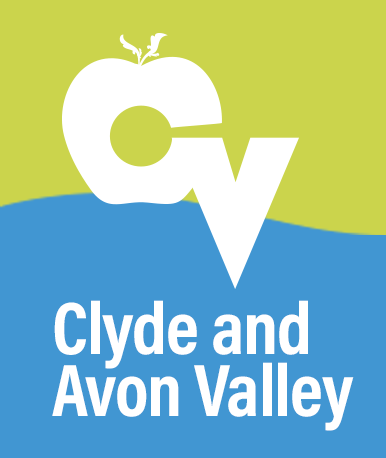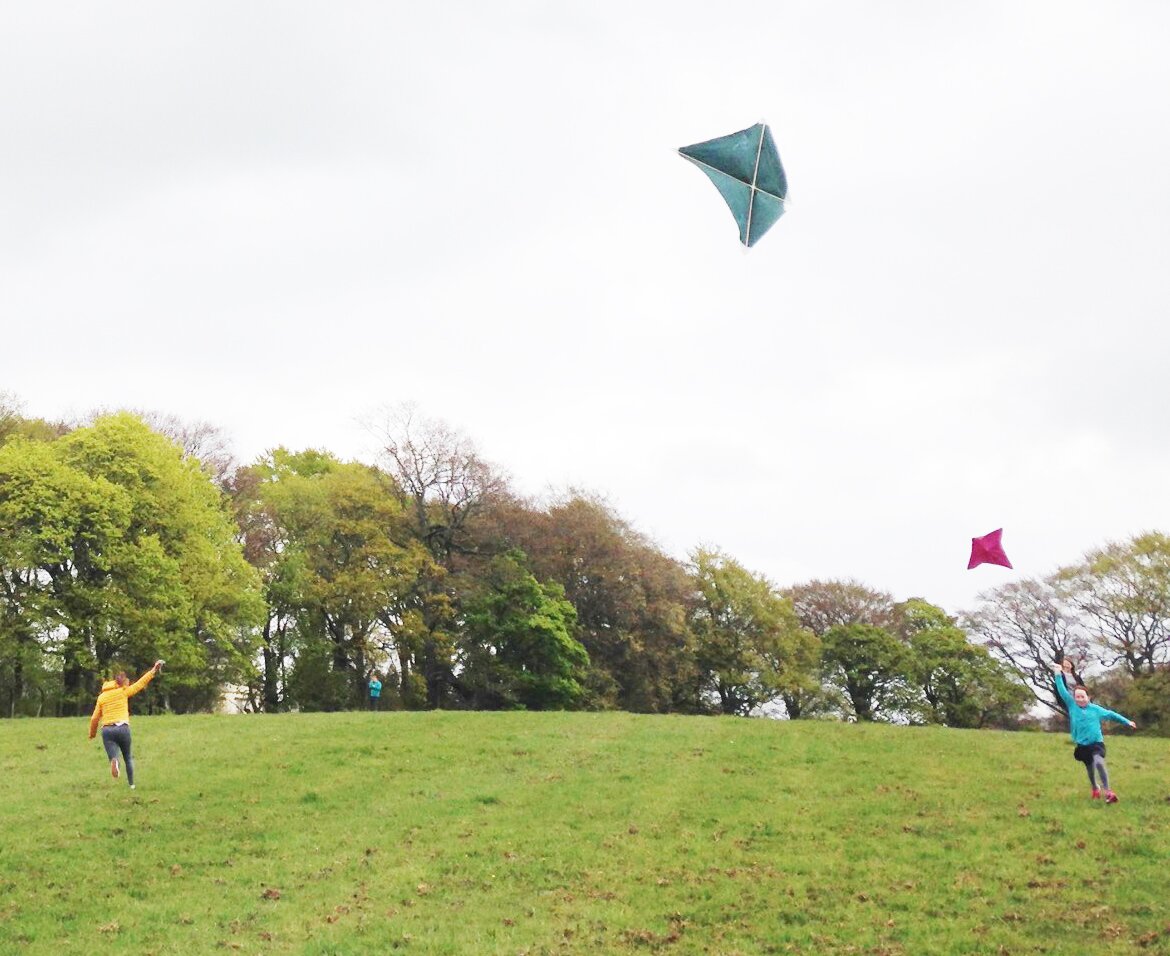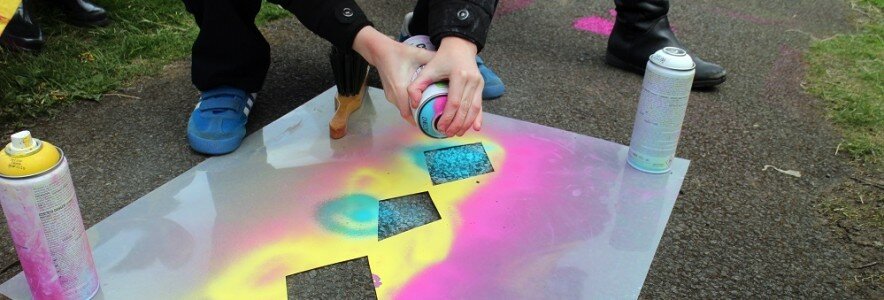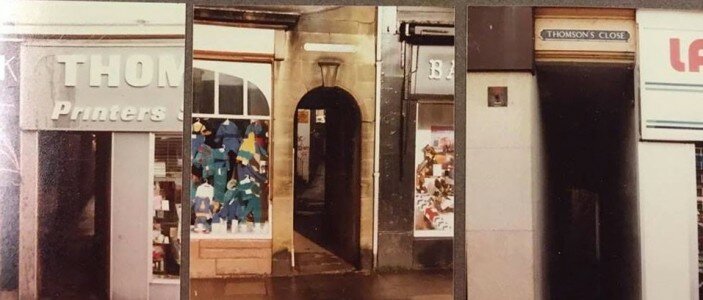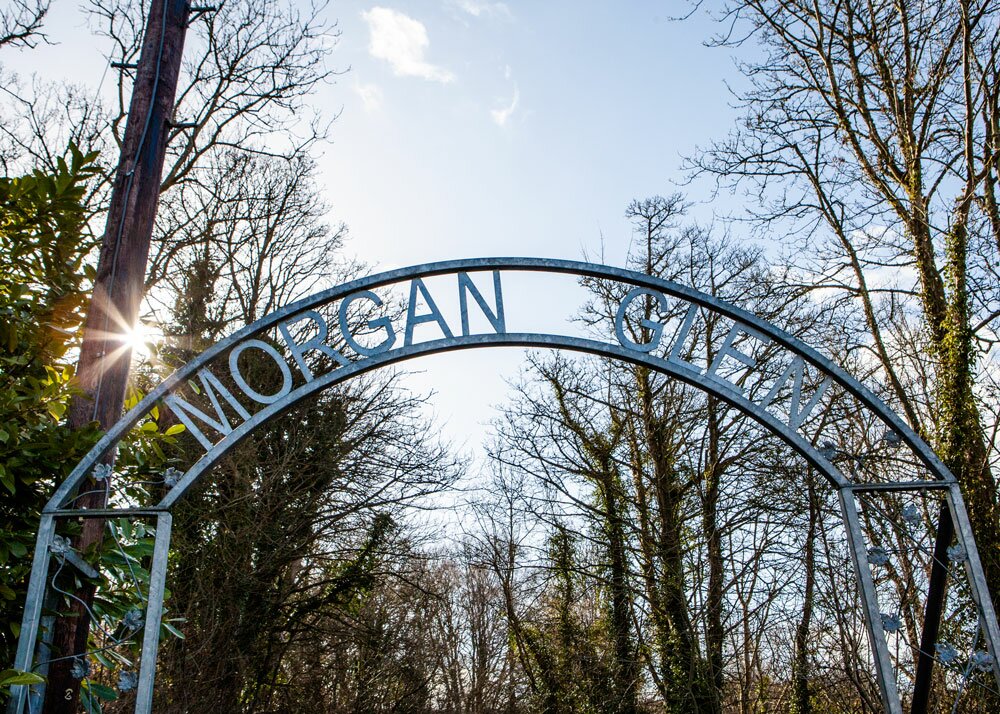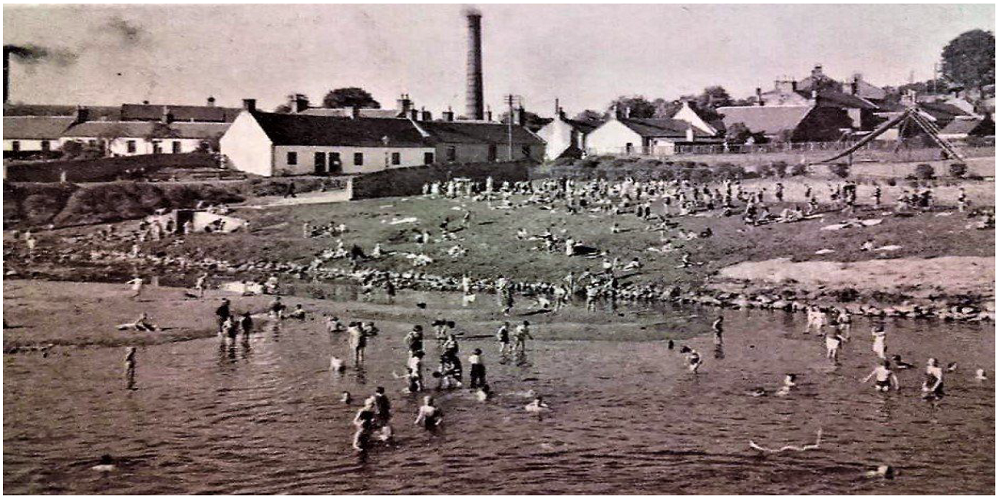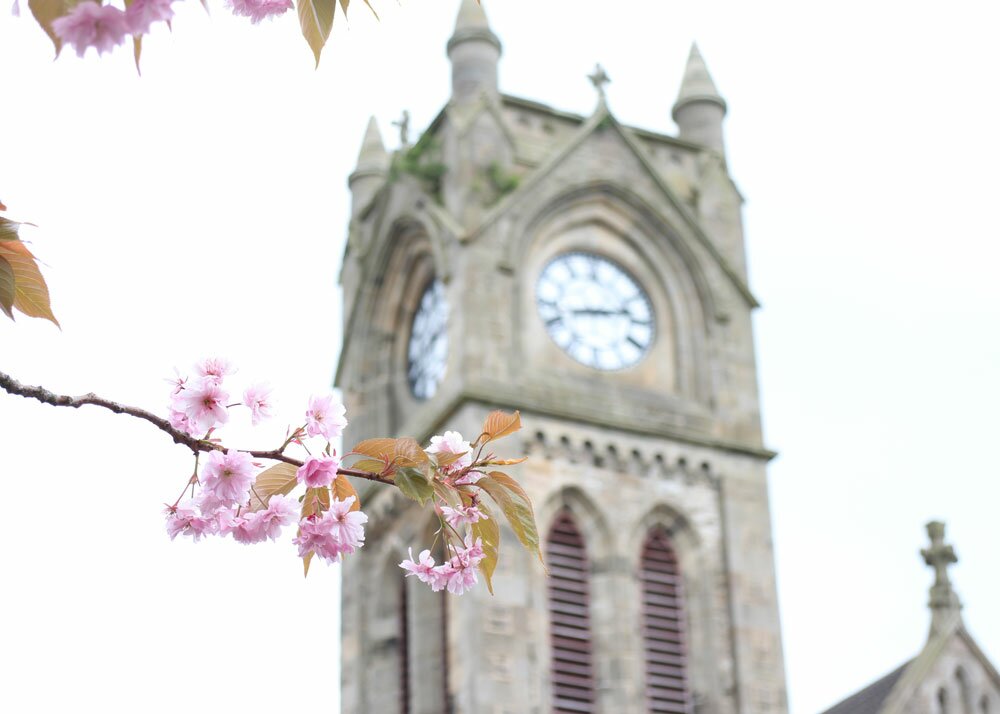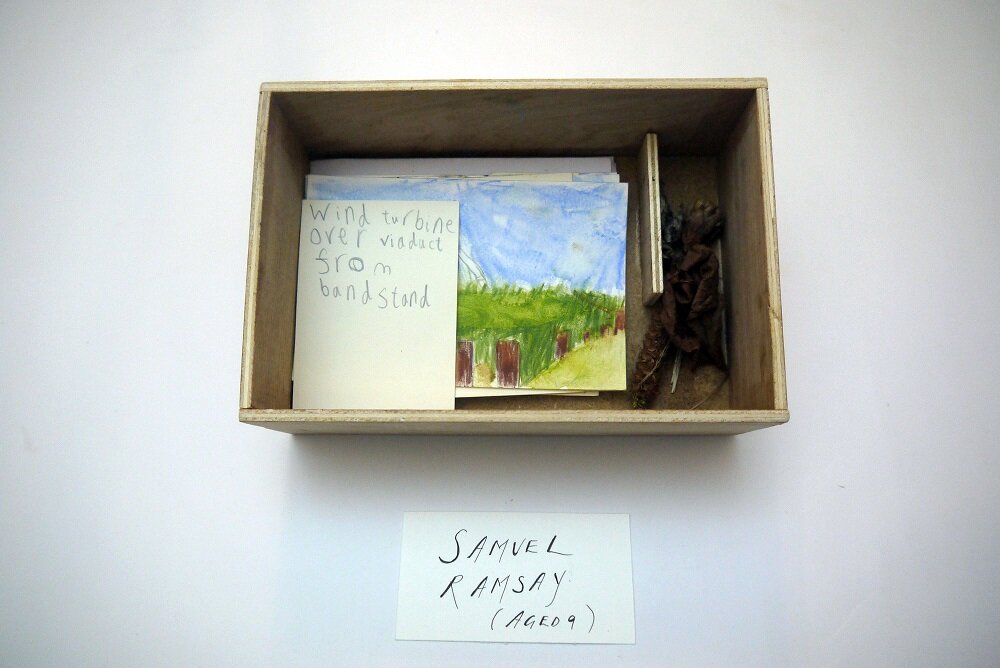Do you eco dye education resource
A green way to get arty in the outdoors
Use this step by step guide to help you create your own intriguing artworks out of natural materials and go green with your creativity whilst exploring the little green spaces all around.
Make Your Way worked with schools in Carluke, Glassford, Lanark, Larkhall and Stonehouse over six months to find creative, engaging ways of walking and exploring the Clyde and Avon Valley. Pupils explored the local landscape for plants that produced rich, colourful dyes. Through the ancient process of Eco-Dyeing they crushed and squeezed the dye out of plants and vegetables to artfully decorate fabric with patterns inspired by the seasons.
Try your hand at looking at Eco-Dyeing by following this guide. Print and download your own copy by clicking under 'Other Resouces'.
Skills involved:
- Creative Composition
- Conservation
- Gardening

ECO-DYE: WAY, WAY BACK TO BASICS
The practice of using natural dyes is a long one. Humans covet colour and of course animal and plant life display vivid colours: sometimes in warning, sometimes for attraction, sometimes to survive.
Naturally obtaining certain dyes, often with great difficulty, allowed you to show off status and wealth. In ancient history the discovery that some shellfish could be used to obtain purple pigments was so significant it created its own Greek myth:
In the ancient city of Tyre, Hercules was walking on a beach with a nymph (a beautiful fairy like creature) when his dog found a shellfish and ate it. The nymph saw that the dog had purple stains all around its mouth and so bargained with Hercules for a robe of the same colour. Hercules then took the dye from the shellfish and made the first robe of Tyrian purple.*
That was no mean feat considering you needed 25,000 shellfish for a tenth of an ounce of dye.* Historian, Tim Robinson, points out that because of this, purple was “worth its weight in gold... used only for the most prestigious and luxurious garments (Robinson, 2007: 104)”.
So Eco-Dyeing has, quite literally, a rich and distinguised history.
* Information from Robinson, T. (2007) Connemara: Listening to the Wind. London: Penguin.
COMPOSITION IS KEY*
With so many possible materials and a blank stretch of cloth or paper, there are - just like in painting - lots of possibilities when composing an image, pattern or scene. Here are some composition tips:
BALANCE - Is there equal space or is everything squashed into one corner? What do you think looks better?
CONTRAST - Create difference: dark and light tone, cold and warm colour, short and long lines...
FOCUS - What is the main thing in your picture?
MOVEMENT - Create a flow. Maybe using powders will make bold broad colours and marks, or little lines with stems of flowers can create jagged, sharp movement.
PATTERN - Repetition again. What marks or shapes can you re-use?
PROPORTION - Relation of shapes, colours, lines. How do things balance, combine and contrast?
RHYTHM - Repeat certain shapes, certain colours and see what happens.
*Information from https://www.thoughtco.com/elements-of-composition-in-art-2577514
What Will You Need? What Will You Need?
Step 1. Time to go flower picking! Step 1. Time to go flower picking!
Collect wildflowers in public areas. Suitable matter for dye includes Violas, Spinach, Beetroot, Marigolds, Dandelion, Sunflowers, Onion skin, Butternut seed husks, Camellias, Roses, Lavender, Blueberries, Grapes, Coneflowers and Hibiscus. Make Your Way found fabric bags suitable for collecting materials. When picking flowers it’s best to Dead Head: only pick the actual flower and not the stem, to allow them to grow back.
Step 2. Set up for a little bit of mess Step 2. Set up for a little bit of mess
Before beginning to crush the matter for dye you will need to prepare the space you are working in - stick down some plastic sheeting to cover tables. Get on the right gear to protect your clothes: an apron and gloves. Have a basin to collect waste material.
Step 3. Composition, Composition, Composition Step 3. Composition, Composition, Composition
Think about how you want to lay out the different materials: the flowers, vegetables, powders and whatever else you find to produce a dye. It’s best to leave the powders till later in the process as they can be potent.
Use the composition tips over the page and think about a theme to guide you: do you want to pick a season, a weather, do you want to make patterns out of pathways, or create a landscape, treescape or seascape? Use some of the examples below to help, and remember what artist Henri Matisse said:
“Composition is the art of arranging in a decorative manner the diverse elements at the painter's command to express [their] feelings.”
Step 4. Pound, Crush, Squash and Roll Step 4. Pound, Crush, Squash and Roll
Once you have your composition fixed and you are happy with how all the different shapes, colours and lines are balanced, contrasting etc. Then it’s time to squeeze the dye out of the matter.
There are a number of ways to successfully press the dye out of the different plants and food stuffs you are using, and some matter will yield dye more readily than others: Beetroot, for example, only requires a small amount to produce strong results, but some leaves need a lot of pressure to make an imprint.
You can use a rolling pin, applying heavy pressure evenly across the composition. Sometimes a roller works well too. When it is difficult to get dye out, you can spray a little water on the area and that may help get more dye. Banging lightly on a flower or leaf can help extract dye, but generally rolling is better because it is more effective and less noisy.
When finished, let the fabric dry and then you can overlay other patterns and colours to add to your work. This is a good time to try out powders like paprika which are very strong and only needed in moderation.
Step 5. Try again, try something new, try something different Step 5. Try again, try something new, try something different
Now you have a finished piece of eco-dyed fabric you can always try a new material - see how it works on water colour paper - or new elements with different colours. The potential is endless. See how you can combine your decorated fabric or paper with other styles like painting or drawing, or try a new theme for inspiration.
|
SOME MORE CURIOUS ECO-DYE FACTS...
As well as squeezing and squashing dye out of plants you can also steam them into fabric.
Substances used to bind dyes to fabric and stop the colour fading are called Mordants. Another natural mordant, apart from urine, is soya milk.
The word mordant comes from the Latin, ‘mordere’, meaning ‘to bite’.*
The first recorded mention of natural dyeing was in 2600BC, though it was long before used in similar processes to cave painting.*
* Information at:
http://sonic.net/~dbeebee/IMDI_new/mordants.html
https://zady.com/features/the-history-of-fabric-dye
STAY SOCIAL
Keep up to date with further projects and share your ideas online using #MakeYourWay
Facebook: www.facebook.com/ClydeandAvonValley/
Twitter: www.twitter.com/ClydeAvonValley
Instagram: www.instagram.com/clydeavonvalley/
Make Your Way is an arts, heritage and active travel campaign, focusing on the communities of Carluke, Glassford, Lanark, Larkhall and Stonehouse, in 2016 – 17. It was delivered by icecream architecture and SYSTRA, with support from Smarter Choices, Smarter Places grant and is part of the Heritage Lottery Fund supported Clyde and Avon Valley Landscape Partnership scheme.

